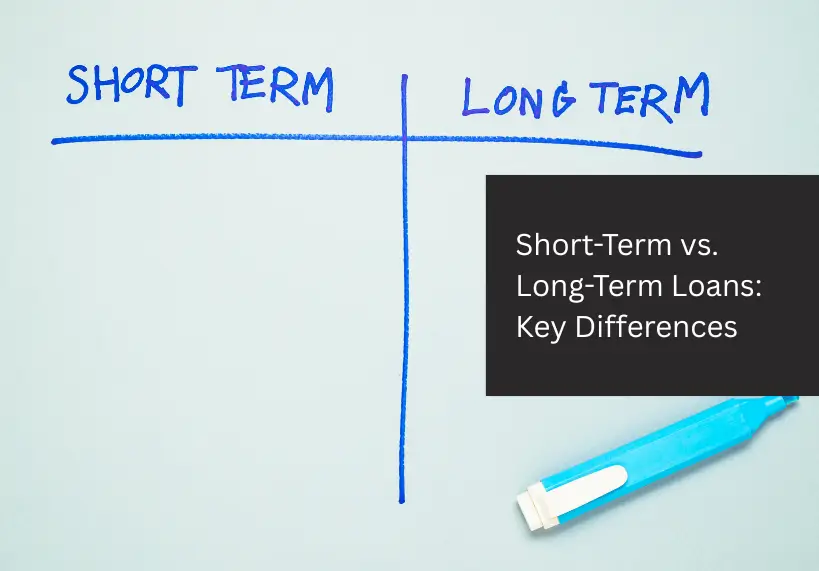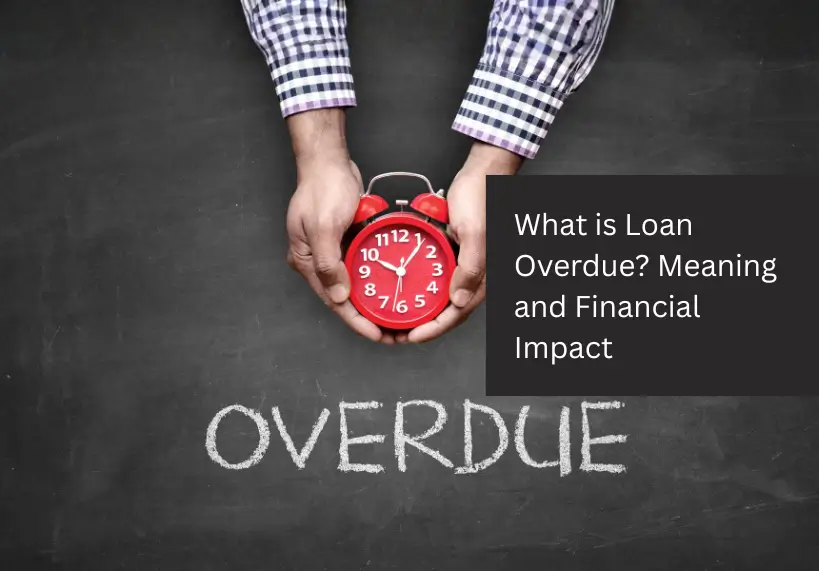
Generally, short-term loans have repayment periods up to a few years, while long-term loans extend over many years. Short-term loans typically cover immediate or urgent needs (like cash-flow gaps or emergencies), whereas long-term loans fund major goals (such as buying a home, paying for education, or expanding a business).
The loan duration impacts interest costs and EMIs: short-term loans usually carry higher interest rates and require larger monthly payments (to repay quickly), whereas long-term loans spread repayments over time, lowering monthly installments.
Short-term personal loans are ideal for urgent needs, while long-term personal loans are suited for significant purchases. In practice, choosing between them depends on your situation your loan purpose, repayment capacity, and overall financial goals.
What Are Short-Term Loans?
Short-term loans are typically small, quick-turnaround loans meant to address immediate expenses. Short-term financing usually applies within a year, acting as a quick solution for sudden personal needs.
Common examples include payday loans, credit card advances, or short-tenure personal lines of credit. These loans offer quick accessibility and flexibility, often requiring minimal documentation.
However, because the repayment period is brief, short-term loans generally carry higher interest rates compared to longer loans. For instance, a short-term personal loan might be approved in days and repaid over 1–3 years, which is ideal for medical emergencies or urgent repairs.
Advantages of short-term loans:
- Fast funding: Approval and disbursal are usually quick, providing rapid access to cash.
- Lower total interest (short-term): Because you repay the loan sooner, the total interest paid can be lower than on a longer loan.
- Flexible and unsecured: They often require little or no collateral (e.g. personal loans are generally unsecured), and may allow prepayment without hefty penalties.
- Useful for emergencies: Designed to handle urgent needs, they prevent you from borrowing more than necessary.
Disadvantages of short-term loans:
- Higher interest rates: Lenders charge steeper rates to compensate for the quick turnaround.
- Larger EMIs: Repaying a loan quickly means higher monthly payments, which can strain your budget.
- Smaller loan amounts: They typically offer lower loan limits, making them unsuitable for very large expenses.
What Are Long-Term Loans?
Long-term loans extend over many years and are meant for large investments or big-ticket expenses. For example, Long-term loans (like home loans) can span 5 to 25 years, and often provide access to substantial amounts.
Long-term financing “goes beyond a one-year timeframe” and is suitable for things like buying a house, funding education, or starting a business. Because the principal is spread out, long-term loans typically come with smaller monthly installments and lower annual interest rates (lenders get their profit over a longer period).
However, these loans may require collateral (for instance, a mortgage requires the home as security), and the total interest paid over time is higher.
Advantages of long-term loans:
- Lower EMIs: Extending the tenure spreads out payments, so your monthly instalments are smaller and easier to manage.
- Lower interest rate: Lenders usually offer more competitive rates on long-term loans, since repayment is spread out and risk is lower.
- Larger loan amounts: You can borrow more money, which is essential for big goals like home purchase or major renovations.
- Credit building and tax benefits: Consistently paying a long-term loan helps build your credit history, and some loans (e.g. home loans) offer tax deductions on interest.
Disadvantages of long-term loans:
- More total interest: Paying interest over many years means a higher overall cost of the loan.
- Long commitment: You are in debt longer; if your financial situation changes, you may be locked into a payment plan that no longer suits you.
- Collateral and risk: Many long-term loans require security (like your home), so defaulting can risk those assets.
- Slower access: Approval often involves thorough credit checks and documentation, so disbursement can take longer than for short-term loans.
Key Differences at a Glance
- Repayment Tenure: Short-term loans typically have tenures of 1–5 years or less, while long-term loans span beyond 5 years (often 10–30 years).
- Loan Amount: Short-term loans usually involve smaller amounts; long-term loans accommodate much larger sums.
- Interest Rate: Short-term loans often carry higher rates to compensate for quick payback, whereas long-term loans tend to have lower rates.
- Monthly EMI: A short-term loan requires higher EMIs (to repay the debt quickly), while a long-term loan results in lower monthly installments over a longer period.
- Collateral: Short-term loans are often unsecured or minimally secured; in contrast, long-term loans (like mortgages) usually require collateral (e.g. property or other assets).
- Approval Process: Short-term loans usually have a faster, simpler approval process; long-term loans involve stricter credit checks and documentation.
How to Choose the Right Loan Term
Deciding between a short-term and long-term loan depends on your specific needs and financial situation.
Purpose: Use a short-term loan for immediate cash needs (like emergency bills) and a long-term loan for lasting investments (like a house or education).
Repayment Capacity: If you prefer smaller EMIs and can commit for many years, a long-term loan may be best; if you need funds quickly and can afford higher monthly payments, a short-term loan could work.
Loan Amount: Large expenses usually require the extended timeline of a long-term loan.
Monthly Budget: Ensure the EMIs do not exceed what you can comfortably pay (avoid stretching more than ~30–40% of your income on EMIs).
Age and Tenure Limits: Lenders often limit how far a loan can extend based on your age; for example, home loans typically can’t go beyond retirement age, so older borrowers may have to opt for shorter terms.
- Factor: Loan Purpose. If the loan is for a one-off short need (e.g. urgent medical expense), a short-term loan is usually sufficient. For long-term goals (e.g. purchasing property), a long-term loan is wiser.
- Factor: Monthly Income. A long-term loan reduces EMI pressure, making it easier on monthly cash flow. However, if your income allows high payments and you want to clear debt fast, a short-term loan’s higher EMI might be acceptable.
- Factor: Total Cost vs Speed. Short-term loans save on total interest but demand heftier payments. Long-term loans cost more in interest over time but ease monthly budgeting.
- Factor: Age. Younger borrowers with decades to work may take longer-tenure loans; borrowers nearing retirement often stick to shorter loans.
The choice between a short-term and long-term loan ultimately depends on your individual situation. If you need quick cash and can afford high EMIs to pay it off fast, a short-term loan may be best.
If you have a long-term goal that requires a large sum and you prefer lower monthly payments, a long-term loan might suit you better. Always compare the interest rates, fees, and terms. Tools like Loantap can help you evaluate loan offers side-by-side.
Understanding these differences will ensure you select the loan type that aligns with your financial goals and capacity.
Frequently Asked Questions (FAQs)
1. What is the main difference between a short-term and long-term loan?
The main difference lies in the repayment tenure. Short-term loans are typically repaid within 1 to 5 years, while long-term loans may extend beyond 5 years—sometimes up to 30 years for large loans like home financing.
2. Which is better: a short-term or long-term loan?
It depends on your financial needs and repayment capacity. Short-term loans work well for urgent or smaller needs if you can handle higher EMIs, while long-term loans suit larger goals and offer lower monthly payments over time.
3. Are short-term loans always more expensive?
Not necessarily. While short-term loans often carry higher interest rates, the total interest paid may be lower since the repayment period is shorter.
4. Can I prepay a long-term loan early?
Yes. Most lenders allow early repayment of long-term loans, though some may charge prepayment or foreclosure penalties. Always check your loan terms before prepaying.
5. Does a short-term loan affect my credit score?
Yes. Like any loan, a short-term loan affects your credit score. Timely repayments can improve your credit score, while missed or delayed payments may hurt it.








